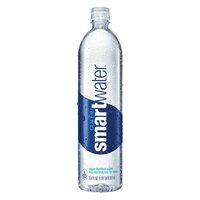No need for that accuracy, go for a digital balance that is good for 0.1gm or at most 0.01g. Typically they go from zero to 200g or 250g. Mine cost me about £10 from ebay and has a tare option.
I typically weigh between 5 and 80g net. The plastic beaker I weigh into is about 35g, hence 115g gross.
As
@dw1305 has said, serial dilution is the way to go. You can buy measuring cylinders but empty clean bottles are free.
For instance 1g in a quart, shake and brim a pint bottle. Eempty this pint into a second quart bottle and brim , you now have 0.5g in the second quart bottle and so on.
If possible get your head round metric units, grammes and litres. 1mg is very small and in a litre is 1 part per million (1ppm). For instance 1US gal is a little shy of 4litres but lets say its good enough.
1g in a gal bottle is 1g in 4litres is 0.25 g in a litre ie 250mg in a litre or 250ppm. Pour some of that solution into a pint bottle, still 250ppm, Then pour that pint into a quart bottle and make up the to the brim with water, you now have a 125ppm solution.
Remember your stock solutions are going to many grammes per litre because you will be adding a small volume of stock solution to a large volume tank/aquarium water.
For instance my stock macro ferts are 80g pot nitrate, 8g pot dihydrgen phosphate and 2g pot sulphate. Dissolve and make up to 2litres (empty drinks bottle). Add 100ml to my tank on alternate days.
Trace/ micro ferts a bit more involved: 8.5g of '13FeEDTA' and 11.0g of 'TEMag'. [These are the commercial trace mixes I went for about 20yrs ago and still have plenty left, in those day it was sold in large bags]. Dissolve in water and make up to 5litres of Stock Solution A. Then 500ml of Stock Solution A and make up to 5litres of Stock Solution B.
10ml of Stock Solution B per UK gal yields: 0.1ppm of Fe, 0.01ppm B,. 0.01ppm Mn, 0.005ppm Cu and so the list goes on and on.
The point is that you can get tiny amounts of substances by weighing out small amounts 19.5gms (approx 28g to the oz for comparison.)
Volume of my tank, guestimated, quantities of ferts that I really add, guestimated. I have given myself wriggle room with my dilutions. Watch the critters and watch the plants. Its an Estimated Index.
I hope that this has been of some use. (Its all about ratios and a bit a High School chemistry)




